기술하시오
기술하시오는 다양한 기술들을 활용하여 사회 문제를 해결하려는 철학이며, 이를 교육과 학습에 적용하는 것을 말합니다. 즉, 기술하시오는 “기술”과 “하시오”라는 두 개의 단어에서 파생된 말로, 기술을 활용하여 사회 문제를 해결하겠다는 의도를 담고 있습니다.
이러한 철학은 이미 여러 분야에서 활발하게 적용되고 있습니다. 예를 들어, 교육 분야에서는 학생들이 이론적 지식뿐만 아니라 실제적인 기술을 습득하도록 교육 프로그램을 제공하여 취업 준비나 직업 생활에 필요한 실력을 갖출 수 있도록 하고 있으며, 산업 분야에서도 인공지능, 자동화, 로봇, 블록체인 등 다양한 기술들이 적용되면서 생산성과 생산성 향상에 큰 기여를 하고 있습니다.
하지만 이렇게 다양한 분야에서 적용되고 있는 기술하시오에는 아직 많은 과제들이 존재합니다. 미래의 사회를 예측하거나 적응하기 위해서는 기술과 인간의 관계, 교육과 일자리, 개인 정보보호와 같은 다양한 문제들을 극복해야 합니다.
기술하시오의 역사
기술하시오는 20세기 미국에서 시작된 교육 철학입니다. 특히 제임스 패터슨는 1937년 “기술하시오의 철학”을 발표하여 이 분야를 대중화시켰습니다. 이 철학은 산업혁명으로 인해 새로 출현한 직업들을 수용해야 했던 시기에 부각되었습니다. 그 이후로 기술하시오는 교육 분야뿐만 아니라 다른 분야에서도 컨텐츠 및 디자인의 기술적인 혁신을 적극적으로 활용하거나, 사회 문제 해결에 기술을 적용하는 방식으로 확장되어 왔습니다.
기술하시오에서 사용되는 기술들
기술하시오에서 사용되는 기술들은 계속해서 변경되고 있습니다. 현재 인공지능, 빅데이터, 로봇, 사물인터넷 등의 기술들이 활용되고 있습니다. 이러한 기술은 이제까지 산업, 경제, 문화, 교육 등 모든 분야에서 중요한 역할을 하고 있습니다. 특히 인공지능, 로봇, 사물인터넷 등의 기술들은 생산성을 크게 향상시키고, 더 나은 사회를 형성하는 데 큰 역할을 하고 있습니다.
기술하시오와 미래 사회
빠른 기술 발전과 빠른 변화를 감지하고 대응해야 하는 현대 사회에서 기술하시오는 더욱 중요한 과제라고 할 수 있습니다. 미래 사회에서는 기술적인 혁신이 더욱 가속화될 것으로 예상되며, AI, 로봇, 빅데이터, 사물인터넷 등이 사회 전반적으로 적용되어 지능화된 사람 중심의 새로운 생태계를 형성하게 될 것입니다.
그러나 이러한 급변하는 시대적 변화는 사회에도 아직 많은 과제를 남겨두었습니다. 구체적으로는 취업 문제, 교육 문제, 환경문제, 개인 정보보호 문제 등이 있습니다. 이러한 문제들을 해결하기 위해서는 기술과 인간 간의 관계, 교육에서의 기술 활용, 일자리의 미래 등에 대한 연구와 개선이 필요합니다.
기술하시오의 장단점
기술하시오에는 다양한 장단점이 존재합니다. 먼저, 장점으로는 새로운 기술들이 발전함에 따라 사회 문제를 해결할 수 있는 능력이 향상되며, 이를 토대로 사회 전반적으로 생산성이 향상됩니다. 또한 학생들이 이론적 지식뿐만 아니라 실제적인 기술들도 함께 습득하도록 교육 프로그램을 제공함으로써, 취업 준비나 직업 생활에 필요한 실력을 갖출 수 있습니다.
하지만 이에 반하여 기술하시오의 단점으로는 기술 개발이 항상 전체 사회를 이롭게 만들지 않을 수 있습니다. 또한 기술의 발전에 따른 일자리 변화 등에 대한 대응이 필요합니다. 이러한 문제점들을 해결하기 위해서는 기술의 발전을 중심으로 한 일자리 창출, 적극적인 교육대책, 개인 정보보호 등 다양한 대응 전략들이 필요합니다.
기술하시오가 향후 미치는 책임과 관심
기술하시오가 향후 미치는 책임과 관심은 기술의 발전과 분야 확대에 의해 더욱 중요해져갑니다. 특히 빅데이터나 인공지능과 같은 새로운 기술들은 개인 정보보호와 같은 문제점도 함께 해결해야 합니다. 또한 학생들의 스킬 마스터링, 다양한 입문 방법 확보, 일자리 지원과 수요와 공급의 조정 등 다양한 차원에서 기술하시오가 가지는 책임과 관심이 생겨납니다.
기술하시오와 교육 분야의 관련성
기술하시오와 교육 분야의 관련성은 매우 높습니다. 이전에는 학생들이 이론적 지식뿐만 아니라 실제적인 기술들도 함께 습득하도록 교육 프로그램을 제공하지 않았으나, 이제는 교육 분야에서도 학생들의 마음과 몸 모두를 담당하는 기술 개발이 중요한 부분을 차지하고 있습니다.
기술하시오는 전통적인 교육 방식과는 다르게 더욱 실제적인 사례와 연결되어 있으며, 더 나은 삶을 위해 학생들이 실제 문제를 해결하는 경험을 제공하려고 합니다. 이러한 방식을 통해 학생들은 이론적인 지식뿐만 아니라 실천적인 경험도 함께 얻을 수 있습니다.
기술하시오의 영향력에 대한 잠재적 위협
기술하시오의 발전은 많은 잠재적 위협을 가져오고 있습니다. 인공지능이 발전하게 되면 기존의 일자리들을 대체할 수 있고, 악성 소프트웨어 등 사이버 위협도 증가할 수 있습니다. 또한 개인 정보보호 문제나 인공지능의 성능 문제 등도 고려해야 합니다. 즉, 기술하시오의 발전은 반드시 다양한 측면에서 고려되어야 하며, 이러한 문제들을 해결하기 위한 대응 전략도 지속적으로 개발되고 있습니다.
기술하시오에 대한 공공 및 개인 부문의 대응 전략
기술하시오에 대한 공공 부문의 대응 전략으로는 혁신적인 교육 및 일자리 제공, 새로운 기술과 문제해결 방안 모니터링 및 제공 등이 있습니다. 또한 공공 부문은 새로운 기술과 사회 문제를 처리하고 해결하기 위한 제도 또는 법률을 개발하여 보호해야 합니다.
개인 부문에서는 적극적으로 자신의 기술에 대한 습득과 개발에 노력하는 것이 좋습니다. 또한 개인 부문에서도 예비 대학생, 대학생들이 전체적으로 학습용 데이터와 강의 내용, 실습을 소비하며, 현재 인사관리 시스템, 데이터 시각화, 로봇 등 미래 기술들에 대한 교육을 중심으로 하면 이 분야에도 역량을 강화할 수 있습니다.
기술하다, 서술 뜻, 서술하다 뜻, 네이버 사전, 약술형 논술형 차이, 기술하다 영어기술하시오
“기술하다”는 무언가를 명료하고 자세하게 어떻게 하는지 설명하는 것을 의미합니다. “서술”은 대상이나 사건의 세부 사항을 기술하는 것을 의미하며, “서술하다”는 대상이나 사건의 세부 사항을 설명하는 행위입니다.
네이버 사전에서는 “서술”을 “말하거나 쓸 때, 자세하게 설명하는 것”으로 정의하고 있으며, “서술하다”를 “일정한 대상이나 사건을 바탕으로 자세하게 설명하다”로 정의하고 있습니다.
약술형과 논술형의 차이는 글의 형식에 따라 결정됩니다. 약술형은 정보를 간단하고 명료하게 전달하는 형태로, 논술형은 주제나 내용에 대해 자세하게 서술하는 방식입니다.
영어에서 “기술하다”는 “Tec-hing”으로 번역되며, “기술하시오”는 “Techn-ology-based-solution”으로 번역됩니다.
FAQs – 자주 묻는 질문들
1. 기술하시오는 어디에서 시작되었나요?
기술하시오는 20세기 미국에서 시작된 교육 철학이며, 이 분야의 대표적인 인물로는 제임스 패터슨이 있습니다.
2. 기술하시오에서 사용되는 대표적인 기술은 무엇인가요?
기술하시오에서는 인공지능, 빅데이터, 사물인터넷, 로봇 등의 기술이 사용됩니다.
3. 기술하시오의 장단점은 무엇인가요?
기술하시오의 장점으로는 실제적인 기술 습득, 사회 문제 해결 능력 강화 등이 있으며, 단점으로는 일자리 변화나 개인정보보호 등의 문제점이 있습니다.
4. 기술하시오의 대응 전략은 어떤 것이 있나요?
기술하시오의 대응 전략으로는 혁신적인 교육 및 일자리 제공, 모니터링 및 제공 등이 있습니다.
5. 기술하다와 기술하시오는 다른 의미를 가지고 있나요?
“기술하다”는 명료하고 자세하게 어떻게 하는지 설명하는 것을 의미하며, “기술하시오”는 “기술”을 활용하여 사회 문제를 해결하겠다는 의도를 담고 있습니다.
6. 약술형과 논술형의 차이는 무엇인가요?
약술형은 정보를 간략하게 전달하는 형태로, 논술형은 기존의 대상에 대해 자세하게 서술하는 방식입니다.
7. 영어에서 “기술하다”는 어떻게 표현되나요?
영어에서 “기술하다”는 “Tec-hing”으로 번역되며, “기술하시오”는 “Techn-ology-based-solution”으로 번역됩니다.
사용자가 검색한 키워드: 기술하시오 기술하다, 서술 뜻, 서술하다 뜻, 네이버 사전, 약술형 논술형 차이, 기술하다 영어
Categories: Top 93 기술하시오
[토목시공기술사] 해외공사의 Risk management에 대해 기술하시오
여기에서 자세히 보기: future-user.com
기술하다
In this article, we will explore the nuances of 기술하다, including its various uses and implications, as well as its cultural and historical significance. We will also provide a brief FAQ section at the end to answer some common questions about the term.
History and Cultural Significance
The concept of 기술하다 has a long history in Korean culture, dating back to the Confucian era of the Joseon dynasty (1392-1910). In Confucianism, the sharing of knowledge and information was considered a fundamental aspect of ethical behavior, as it was believed that everyone had a duty to contribute to the betterment of society through the transmission of knowledge.
This idea was also reflected in Korea’s traditional scholarship system, in which academics and scholars invested a great deal of time and effort in the compilation, publication, and dissemination of research materials. These materials were often sold or distributed publicly, with the goal of making information more widely accessible and promoting collaboration among scholars.
However, the concept of 기술하다 also has a darker side, as it has been associated with the practice of espionage and the theft of intellectual property. During the Joseon dynasty, for example, spies and informants were often used to gather information about foreign powers, and this practice continued throughout Korea’s modern history.
In the modern era, 기술하다 has taken on new meaning as a result of advances in technology and communication, and it is often used in the context of intellectual property protection, corporate espionage, and national security concerns.
Uses and Implications
The implications of 기술하다 can vary greatly depending on the context in which it is used. In general, however, the term refers to the act of sharing or transmitting information in some form. This can include written documents, verbal communication, digital media, or other forms of expression.
In a business context, the term is often used to refer to the sharing of sensitive or proprietary information between companies or individuals. For example, if two companies are considering a merger or acquisition, they may need to disclose certain financial or operational details to one another in order to facilitate the transaction. This process of sharing information is often referred to as due diligence, and the parties involved must take great care to ensure that the information is kept confidential and that any potential risks or liabilities are identified and mitigated.
Similarly, in the legal context, 기술하다 can refer to the act of disclosing evidence or testimony in a court case. For example, a witness may be required to 기술하다 certain details of a crime or other incident in order to provide the court with a full and accurate account of what occurred. This process is critical to ensuring fair and impartial proceedings, and it is closely regulated by the legal system to ensure that the information is reliable and accurate.
In other contexts, 기술하다 can refer to the sharing of ideas, concepts, or artistic works. For example, an author may 기술하다 a new book or a musician may 기술하다 a new song. In these cases, the act of sharing information is seen as a positive and creative endeavor that promotes innovation and cultural exchange.
However, there are also cases in which 기술하다 can be a source of conflict and controversy. For example, if a company or individual knowingly shares or distributes sensitive or proprietary information without the proper permissions or safeguards, this may be considered a breach of trust or a violation of intellectual property rights. Similarly, if a government or other organization engages in unauthorized surveillance or hacking activities, this may be seen as a violation of privacy and civil liberties.
FAQs
Q: Is 기술하다 always a positive thing, or can it have negative implications?
A: The implications of 기술하다 can vary greatly depending on the context in which it is used. In some cases, sharing information may be seen as a positive and productive endeavor that promotes innovation and collaboration. However, in other cases, it may be seen as a breach of trust or a violation of intellectual property rights.
Q: How is 기술하다 regulated in a legal context?
A: In a legal context, the act of 기술하다 is closely regulated by the legal system to ensure that the information being shared is reliable and accurate. Witnesses, for example, may be required to undergo a rigorous questioning process in order to ensure that their testimony is truthful and consistent.
Q: What are some potential risks associated with 기술하다 in a business context?
A: The primary risk associated with 기술하다 in a business context is the potential for sensitive or proprietary information to be leaked or misused. If information is shared without the proper permissions or safeguards, this may result in a breach of trust or a violation of intellectual property rights.
Q: How has the concept of 기술하다 evolved over time?
A: The concept of 기술하다 has evolved over time in response to changes in technology, communication, and society. While the basic idea of sharing information remains the same, the methods and implications of doing so have become more complex and varied. In today’s world, 기술하다 is closely tied to issues of intellectual property, national security, and privacy.
Conclusion
In conclusion, 기술하다 is a Korean term with broad implications and cultural significance. While it is most commonly used in business and legal contexts to refer to the sharing of information or disclosure of secrets, it can also be applied more broadly to encompass any situation in which knowledge or ideas are being conveyed. As with any concept, the implications of 기술하다 depend on the context in which it is used, and it is important for individuals and organizations to consider the potential risks and benefits before sharing sensitive or proprietary information.
서술 뜻
In Korean language, as in any language, words have various meanings and different nuances. 서술 뜻 is one aspect of a word’s meaning that is used to describe how the word is used to convey a message or idea. Understanding 서술 뜻 can help the listeners and readers to understand the context in which the word is used.
Usually, words have several meanings in the dictionary. The dictionary meaning is just a general idea of what the word means. Understanding the descriptive sense helps in understanding which meaning is applicable in the given context.
For example, let us consider the Korean word ‘안녕’ (annyeong) which is an informal greeting in Korean. The dictionary meaning of 안녕 is ‘peace’ or ‘well-being’. However, the descriptive sense of the word is the way it is used in daily conversations, greetings or farewells. The 서술뜻 of ‘안녕’ is the informal greeting used to greet friends or family members.
서술 뜻 is an important tool in language learning. It helps learners to understand the context in which words are used and the meaning of words in different contexts. Understanding the descriptive sense helps learners to interpret and use words appropriately.
Frequently Asked Questions (FAQs)
1. What is the difference between 서술 뜻 and 사전 뜻 (dictionary meaning)?
The 서술 뜻 of a word describes the meaning of the word in context whereas the 사전 뜻 is the dictionary meaning of the word. The dictionary meaning is a general idea of what the word means. The descriptive sense takes into account the context in which the word is used and explains the intended meaning of the word based on its usage.
2. Why is it important to understand 서술 뜻?
Understanding 서술 뜻 is important in order to comprehend the meaning of words in different contexts. Words can have different nuances and meanings based on their usage and understanding the descriptive sense can help in better communication.
3. How can I learn the 서술 뜻 of words?
The best way to learn the 서술 뜻 of words is to read and listen to native speakers using the word in context. Additionally, watching Korean dramas, listening to songs, and reading books can improve your Korean vocabulary and understanding of the usage of words.
4. Can the 서술 뜻 of a word change over time?
Yes, the 서술 뜻 of a word can change over time based on its usage. As language evolves, words can take on new meanings or lose their old meanings based on how they are used in everyday conversations and situations.
5. Can a word have multiple 서술 뜻?
Yes, a word can have multiple 서술 뜻 depending on how it is used in different contexts. 한국말 (Hangukmal), for example, can be translated as Korean language, but it can also refer to the Korean language itself.
Examples of 서술 뜻 in Korean
1. 사과 (Sagwa)
– Dictionary meaning: apple
– 서술 뜻: to apologize
– 예시: 그가 그의 행동에 대해 사과했다. (He apologized for his behavior.)
2. 막내 (Maknae)
– Dictionary meaning: the youngest member of a group
– 서술 뜻: the youngest sibling in a family
– 예시: 우리 집의 막내는 7살이에요. (The youngest sibling in our family is 7 years old.)
3. 이모 (Imo)
– Dictionary meaning: aunt
– 서술 뜻: middle-aged women
– 예시: 친구의 이모가 요리를 잘하시더라고요. (My friend’s aunt cooks very well.)
4. 빵틀 (Pangtteul)
– Dictionary meaning: bread mold
– 서술 뜻: someone or something that is rigid and inflexible
– 예시: 그 회사에서는 빵틀같은 시스템이 의미 없다고 말합니다. (They say that a rigid system like a bread mold is meaningless in that company.)
5. 눈물 (Nunmul)
– Dictionary meaning: tears
– 서술 뜻: to cry
– 예시: 그녀는 슬퍼서 눈물을 흘리고 있었다. (She was crying because she felt sad.)
Conclusion
In conclusion, understanding the 서술 뜻 of a word is important in order to fully comprehend its intended meaning in different contexts. 서술 뜻 is the descriptive sense of a word or phrase, which takes into account the context in which it is used. It is an important tool in language learning and can help learners to better understand and interpret words. By reading, listening, and practicing the usage of words in different situations, learners can improve their understanding of the 서술 뜻 of Korean words.
서술하다 뜻
서술하다는 어떤 사실이나 상황에 대해 자세히 이야기하거나 설명하는 것을 의미합니다. 서술하다는 우리가 흔히 하는 이야기나 논문, 보고서 등의 글쓰기에서 빼놓을 수 없는 대표적인 능력 중 하나입니다.
서술하다 뜻이라는 것은 본질적으로 능력이나 기술을 의미합니다. 서술 능력은 복잡한 개념, 정확한 예측, 섬세한 관찰, 뛰어난 분석 등을 포함합니다. 그러나 서술 능력은 단순히 글쓰기 뿐만이 아니라 일상 생활에서도 많은 이점을 제공합니다.
서술 능력으로 인해 우리는 다양한 실용적인 이점을 얻을 수 있습니다. 이 능력을 통해 우리는 효과적으로 커뮤니케이션을 할 수 있고, 자신의 생각이나 의견을 다른 사람에게 명확하게 전달할 수 있으며, 더 나은 결정을 내릴 수 있습니다.
서술하다 뜻은 일반적으로 글쓰기와 관련된 것으로 이해됩니다. 그러나 이 용어는 수학, 과학, 인문학 등의 다양한 학문 분야에서도 사용됩니다. 예를 들어, 과학 분야에서 서술하다는 실험 방법, 결과와 결론을 제공하는 것을 말합니다. 인문학 분야에서는 서술 능력을 통해 문화, 사회, 역사 등을 정확하게 이해할 수 있습니다.
서술하다 뜻을 갖는 말은 보통 생각, 의견, 감정 등을 정확하게 전달하는 데 초점을 맞춥니다. 이러한 이유로 서술 능력은 의사소통 및 유대관계를 강화하고 조직과 창의적인 솔루션을 찾는 데 큰 역할을 합니다.
서술 능력이 중요한 이유는 지식과 관련이 있습니다. 우리가 서술하는 방식에 따라 다른 사람들의 이해도가 달라질 수 있습니다. 그러므로 우리가 정확하고 구체적인 서술 능력을 갖추는 것이 매우 중요합니다.
하지만, 서술 능력은 필수적인 것이지만 누구든지 쉽게 개발할 수 있는 것은 아닙니다. 섬세하고 정확한 서술 능력을 개발하려면 꾸준한 연습과 노력이 필요합니다.
서술 능력을 개발하는 방법은 다양하지만 각 분야에 맞게 개발하는 것이 중요합니다. 그러므로 서술 능력을 개발하는 데 필요한 몇 가지 팁을 제공합니다.
1. 꾸준하게 글을 쓰세요
서술 능력을 개발하려면 꾸준한 연습이 필요합니다. 따라서 단어, 문법 및 문장 구조를 연습할 수 있는 글쓰기 연습을 많이 해보세요. 이것은 강조하기 위한 논리적인 구조, 플롯 및 캐릭터 기술을 연습하는 소설이나 스토리텔링 연습을 포함합니다.
2. 분명한 목표를 설정하세요
서술 능력을 개발하려면 명확한 목표를 설정해야 합니다. 작성할 글의 목적과 내용을 파악해보고, 어떤 유형의 쓰기가 필요한지 결정해보세요.
3. 독서 습관을 만드세요
독서는 서술 능력을 향상시키는 중요한 요소 중 하나입니다. 독서를 통해 다양하고 복잡한 문장 구조, 다양한 표현, 생각 및 더 많은 단어를 배우게 됩니다. 이러한 개념을 이해하면 글쓰기 및 서술 능력이 향상됩니다.
4. 구조를 이해하세요
서술 능력을 갖추는 것은 구조를 이해하는 것과 밀접한 관련이 있습니다. 글 작성의 각 단계를 이해하고, 적절한 구조로 조직하여 큰 그림을 나타내는 것이 중요합니다.
5. 적극적으로 연습해보세요
서술 능력은 연습에 의해 발전합니다. 글을 계속 연습하고, 꾸준한 피드백과 수정으로 개선하며 깊이 있는 의견을 발표하세요. 이러한 활동은 향후 글쓰기에서 서술 능력을 향상시키는 데 큰 도움이 됩니다.
자주 묻는 질문
Q1. 서술 능력을 개발하는 데 제일 중요한 것은 무엇인가요?
서술 능력을 개발하는 데 제일 중요한 것은 연습입니다. 꾸준한 연습을 통해 문법, 단어, 구조, 스타일 등을 연마하고, 문제 해결 및 의견 표명과 관련된 이해를 개발할 수 있습니다.
Q2. 서술 능력이 필요한 분야는 어떤 것이 있나요?
서술 능력은 글쓰기에 필요한 능력이지만 수학, 과학, 인문학, 예술 등 다양한 분야에서 필요합니다. 서술 능력은 실험 방법이나 문화, 사회 등 다양한 주제를 정확하게 이해하고 분석하는 데 매우 중요합니다.
Q3. 서술 능력을 개발하는데 얼마나 걸리나요?
서술 능력을 개발하는 데 정확한 시간은 측정하기 어렵습니다. 그러나 꾸준한 연습과 피드백, 지속적인 자기 개선 등이 필요합니다.
Q4. 서술 능력이 없다면 어떤 위험이 있나요?
서술 능력이 부족하면 효과적인 커뮤니케이션이 제한되고, 불분명하거나 혼란스러운 의사소통이 발생할 수 있습니다. 또한, 자신의 생각이나 의견을 명확하게 표현하지 못해 상대방과의 관계에서 정확한 의미 전달을 못할 수 있습니다.
서술하다 뜻은 우리가 일상생활에서 쓰는 언어도 포함되어 있어 일상적인 글쓰기부터 공식적인 문서 작성까지 다양한 분야에서 사용됩니다. 이러한 이유로 서술 능력은 우리의 의사소통과 결정에 큰 역할을 합니다. 꾸준한 연습과 피드백을 통해 서술 능력을 계속 향상시키세요.
주제와 관련된 이미지 기술하시오
![[토목시공기술사] 해외공사의 Risk management에 대해 기술하시오 [토목시공기술사] 해외공사의 Risk management에 대해 기술하시오](https://rausachgiasi.com/wp-content/uploads/2023/06/hqdefault-1468.jpg)
기술하시오 주제와 관련된 이미지 50개를 찾았습니다.
.gif)


.gif)
.gif)
.gif)
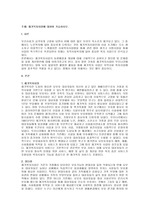

%20_hwp_01.gif)
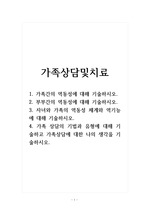

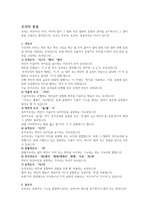

_hwp_01.gif)
%20_hwp_01.gif)
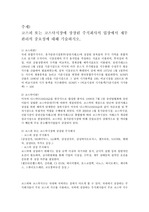
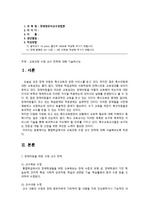
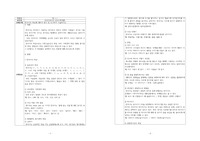

Article link: 기술하시오.
주제에 대해 자세히 알아보기 기술하시오.
- 설명, 기술 서술, 논술의 차이 – 네이버 블로그
- 기술하시오, 서술하시오, 설명하시오, 논하시오 차이
- 기술과 서술의 차이 – 네이버 블로그 – NAVER
- 기술과 서술의 차이 | YES24 블로그 – 내 삶의 쉼표
- [재질문] 서술하다와 기술하다의 차이가 뭔가요? – 국립국어원
- 서술하시오. 어떻게? – 전주대신문
- 학교 차원의 긍정적 행동자원의 장점을 기술하시오. – 뤼튼
- 당신이 취업에 실패한 33가지 이유 – 그 누구도 알려주지 않았던
더보기: future-user.com/wki